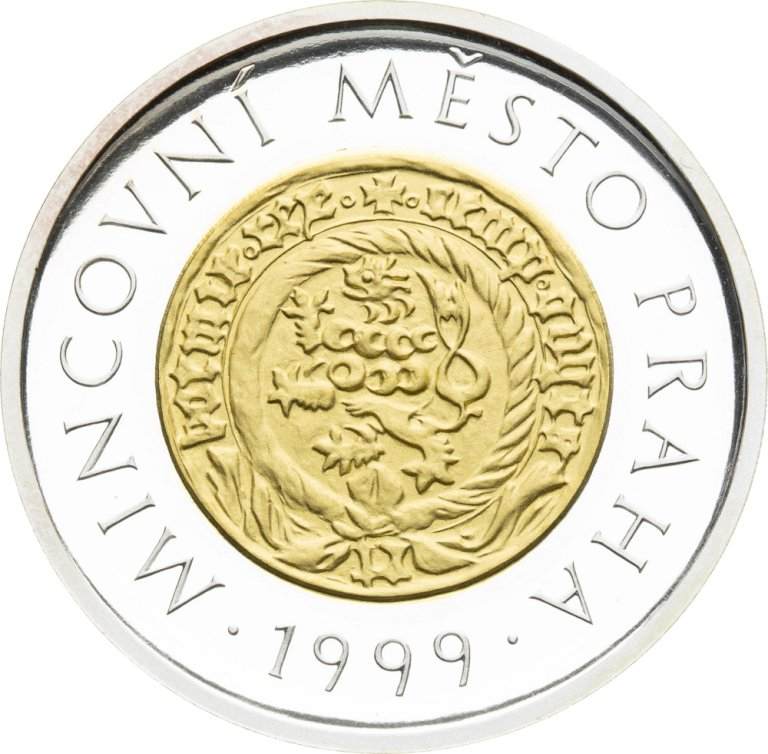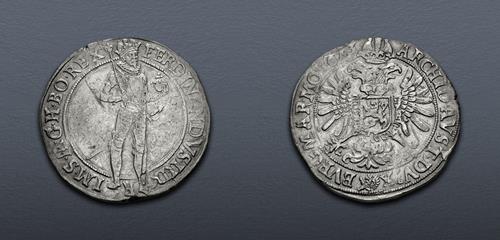Excellent News To Scanning Prague Mint Coins
How Is The Plaster Model Transformed Into A Digital 3d Model For Gold Coins Or Gold Medals?The process involves scanning a maquette to create a 3D digital model of gold medals or coins. A special equipment is utilized to capture the information and dimensions of the physical model in a digital form. The digital copies are utilized for various purposes during production.
3D Scanning Technology - High-resolution 3D scanners can be used to record the physical dimensions and specifics of the model. These scanners utilize various methods such as laser scanning and structured light to capture precise dimensions and geometrical forms.
Capturing surface information- The scan emits light beams or lasers onto the plaster model. The scanner records these distortions and reflections. The information gathered is used to construct an accurate model.
Data Collection- As it moves along the surface of the plaster models the scanner accumulates many information points. These data points are utilized to create an electronic model of the model that includes its contours, geometry details, and contours.
Conversion into 3D Model - The data points taken are processed by software that converts them into a 3D digital model. This model reflects the physical characteristics and dimensions of the plaster maquette.
The Motives for Creating an Digital 3D Model
Precision and Replication Digital 3D models permit precise replication of the physical model's details and dimensions. It is important to maintain this accuracy in order to make sure that the final design of the gold coin or medal is in line with the original.
Digital models can be easily altered and refined. Designers are able to modify the 3D model, but not alter the maquette that was originally created.
Compatible with Manufacturing Processes: Digital 3D models can be used with various manufacturing methods, such as 3D printing and CNC machining. This allows for rapid creation of molds and dies.
Digital 3D model archives and documentation Digital models are stored as documentation of the design. You can save them digitally to be a reference in the future, or for reproductions, or as a way to record the past.
By scanning the model and then creating digital 3D models, manufacturers and designers can streamline the production process to ensure accuracy when replicating, and leverage advanced manufacturing technologies for creating gold coins or medals with a high degree of precision and fidelity to the original design. Check out the best Scanning and 3D Modeling Czechoslovakia gold coins more advice. including buy gold bars from bank, gold and silver buyers near me, gold morgan dollar, gold silver coins, bullion dealers, 2000 p gold dollar, liberty gold coin, congressional gold medal, st gaudens gold coin, 1 oz gold coin price today and more.

What Can Laser Technology Do? Employed To Refine Gold Medals And Coins"Die" Surfaces?
Laser technology used in die production or master hubs is employed to refine the surface and improve precision. Let's take a look at how laser technology works during this process. Surface Refinement
Laser technology is utilized to refine the surface of the hub or die after the initial processing. It aids in smoothing out imperfections, removing burrs or tiny imperfections in the surface.
Detail Enhancement-
Laser techniques for engraving or ablation can be used to improve or create intricate details on dies or master hubs. Lasers have the ability to cut through the material or etch it in a precise manner to produce fine lines, textures and intricate patterns.
Microstructuring-
Laser microstructuring is the process of creating tiny features or textures on the surface of the die. This technique is used to create specific patterns or textures to increase the aesthetic value or security features of coins or medals.
Surface Hardening, or Treatment
Laser technology can be used to harden or treat the surface of dies or master hubs. This procedure improves durability and wear resistance that ensures the longevity of the striking process.
Precision Changes
Laser technology permits precise alterations and corrections of the die or master hub, without affecting the overall geometry. The surface is modified to eliminate any flaws or irregularities which could impact the quality of the coin or medals minted.
Controlled Material Removal-
Laser ablation can be used to provide controlled removal of materials, especially in areas where complex details need to be defined or altered. It offers a non-contact technique for material removal while maintaining the integrity of the surrounding areas.
Laser technology can be utilized to refine the surface of dies and master hubs, resulting in a finer appearance, enhanced surface quality, and increased precision. This technology enhances the traditional methods of machining, permitting precise control and enhancements to the surface characteristics of dies essential to striking high quality gold awards or coins. View the most popular laser processing Czechoslovakia gold coins blog examples. including ancient coin, 50 dollar gold piece, gold coins coin, 1 oz gold bars, gold angel coin, gold dollar coin, buying silver bars, ngc grading, euro coins, $50 gold piece and more.

How And Why Are Gold Blanks Of High Quality Measured And Weighed Before The Process Of Minting Begins?
The process is followed to create gold-plated medals and coins of high quality. Here's how and why this process is executedPreparation of the process Gold Material Selection- Gold that is of high purity is used for the production of blanks. Gold is refined to meet the purity standards for coins.
Gold Blanks Production- Gold is transformed into blanks by an approach known as blanking or blank-cutting. Blanking involves cutting coins-sized disks, or planchets, made from gold.
Precise Weighing and Measuring
Weighing Every blank is individually weighed to ensure that it meets the specified specifications to be used for the coin. This procedure ensures that the medal or coin contains precisely the correct quantity of gold.
Measuring - To guarantee uniformity for uniformity, the thickness, diameter overall dimensions, as well as design specifications are adhered to each piece of paper is measured with precision instruments.
Inspection and Control of Quality
Visual Inspection Each blank is assessed visually for imperfections on the surface, irregularities, or impurities. They could influence the final product’s quality.
Rejecting Blanks Which Do Not ConformThe blanks are rejected if they do not meet the weight, size, or any other quality requirements. This is done in order to ensure the uniformity and uniformity.
The Reasons For Preparation
Consistency in the Minting Process- Precisely weighed and measured blanks guarantee uniformity in the minting process. Weight and dimension consistency ensures uniformity in the striking process and creates medals and coins with the same weight and quality.
Accurate Gold Content - Each blank is precisely weighed to ensure that the final piece of coin or medal contains the exact amount of gold needed. This assures precision in both value and purity.
Uniform Blanks Help Prevent Variations Uniform blanks to prevent any weight or size variation that could impact the legality, value, and the usability of a currency or medal that is in circulation or commerce.
Quality Assurance - Strict measures of quality control throughout the blank preparation process ensure that only top-quality and defect-free blanks are sent to the stage of minting which reduces the chance of flaws showing up on the finished product.
Legal Compliance- The coins are designed to be used for circulation or as commemorative. They must meet the legal requirements along with specifications and standards set by mints or regulators.
The accuracy and reliability in preparing high-quality gold blanks are crucial aspects of the minting process, ensuring the production of precise high-value, legally conforming gold coins or medals. Have a look at the best gold blanks for Czechoslovakia gold coins blog examples including gold price apmex, cost of silver coin, krugerrand gold coin, gold silver dealers, 2000 olympic, 1 0z gold price, gold and coin near me, gold bullion bars, buying silver, sovereign british coin and more.

How Do Gold Blanks Get Loaded Into Coin Presses At High Pressure?
In the process of coining Gold blanks are loaded into coin presses at intense pressure. Then, they are stamped to produce completed coins or medals. This is a brief overview of the steps involved in loading blanks.
In the feeder system connected to the press, gold-plated blanks are prepared prior to the press and quality-tested. The feeder system is responsible for maintaining a continuous flow of blanks to the coin press.
Feeding Blanks to the Press
The feeder system guides each blank into the striking zone of the coin presses. This ensures accurate positioning of each stamping blank.
Alignment, Positioning and Positioning
The blanks will be placed in the press, and placed in the room for striking to ensure they are in the right place and oriented to perform the stamping.
Moving under Pressure
The coin presses exert high pressure on the gold blanks by using a pair dies - one stationary and the other mobile. The stationary die contains the negative impression of the coin's design, while the moving die is the hammer which strikes the blank.
The die that moves transfers the design from the blank to its surface using a lot of force. The pressure of the dies imprints the designs, creating the raised reliefs and details of the medal or coin.
Repeated Striking Optional
For higher-quality coins or medals, especially proof or collector's editions, a variety of strikes can be applied to achieve the most precise, sharper visual or a design. Each strike refines the detail inside the blank.
Ejection and collection
When they have been struck, the coins and medals are ejected into trays. Control of quality is conducted to ensure that the designs conform to the specifications.
Post-Processing-
Minted medals or coins may undergo additional processing, such as edge lettering, edge reeding, or even post-strike treatment based on the design requirements or specifications for mints.
High-pressure stamping which creates a design onto the gold blanks is critical in that it converts them into finished coins or medals that are used for collectors, circulation or commemoration. The process of stamping demands precision as changes in pressure and alignment can impact the final product's quality. Check out the best minting Czechoslovakia gold coins more recommendations. including silver double eagle, 2000 gold dollar, american eagle gold coin, 1 oz gold, buy gold bullion, liberty head nickel, gold silver dealers, euro coins, 1 10 oz gold eagle, gold piece price and more.
